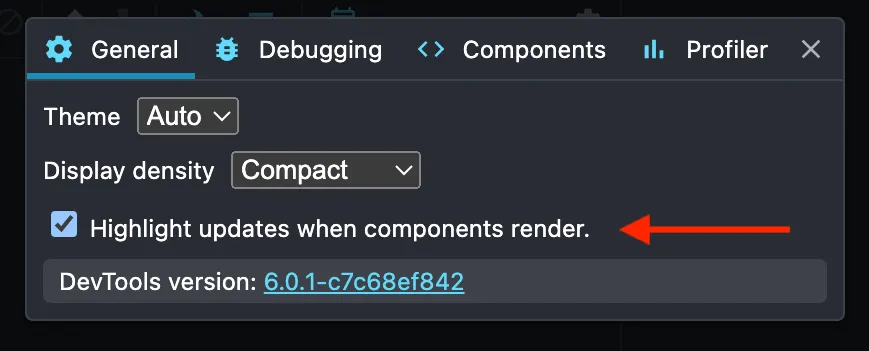Reducing React re-renders with memoized references
TLDR
Variables/functions defined in the function body of a component are re-created
on every render. Anything that receives them as props will re-render every time,
even if the component is memoized with memo(). Memoize objects and functions
passed as props with
useMemo()/useCallback()
and memoize components with memo()
to prevent unnecessary re-renders.
Why React re-renders
By default, React re-renders a component whenever:
- props changed
- a component higher in the component tree re-rendered
- state changed
- context changed
React doesn’t have fine-grained reactivity (💛 solid ) so it has to re-render a component to find out what (if anything) needs to change in the UI. An unnecessary re-render is a re-render that occurs, even though a component’s props or state haven’t changed in a way that affects the UI.
Why is re-rendering a problem?
Extra re-renders are usually okay! A lot of devs like the simplicity of the React system.
Problems appear if you’re unnecessarily re-rendering:
- large swaths of your app
- Computationally expensive components
When these types of re-renders happen, users experience:
- slow, janky UIs
- sub 60fps animations
- delayed user interaction
- hot laptops and dead batteries
A common source of re-renders: hidden prop changes
A common source of unnecessary re-renders is ‘hidden’ prop changes. This happens when we pass props that appear to be the same to us but aren’t the same to React.
In the following app structure, when do you expect <List/> to re-render?
export default function App() {
const [name, setName] = useState('');
const items = ['a', 'b', 'c'];
return (
<>
<Input value={name} onChange={setName} />
<List items={items} />
</>
);
}
const List = memo(function List({ items }: { items: string[] }) {
return (
<ul>
{items.map((item) => (
<li key={item}>{item}</li>
))}
</ul>
);
});
function Input({
value,
onChange,
}: {
value: string;
onChange: (str: string) => void;
}) {
return (
<>
<label htmlFor="name">Name: </label>
<input
type="text"
value={value}
id="name"
onChange={(e) => onChange(e.target.value)}
/>
</>
);
}<List /> re-renders whenever someone types into the input. We memoized it with
memo() so it should only re-render when its props/state change, right? 🧐
In this case, typing triggers setName() which causes <App /> to re-render.
We’re defining items in the function body of App() so we’re creating a new
items array every time <App />’s state updates. From <List/>’s
perspective, it’s getting a separate array every time.
To re-render or not to re-render
Why does defining data in the body of a component cause re-renders?
React uses Object.is()
to compare old props with new props. If they’re different, React re-renders.
From <List />’s perspective, it sees:
Object.is(['a', 'b', 'c'], ['a', 'b', 'c']); // false 😔Object.is()
uses referential equality for Objects/functions. That means both
objects/functions need to point to the same location in memory in order to
evaluate to true. Since we’re creating a new items array on each <App />
render, <List /> sees two different items arrays.
useMemo() is more than a computation cache
useMemo() is typically used to
cache a computation between renders. For example, you’re computing something
expensive and don’t need to recalculate it on every single render if the
props/state it depends on haven’t changed, we can re-use the result.
We can also use it to reuse objects between renders so instead of this:
// created on every re-render 🙅
const items = ['a', 'b', 'c'];We memoize it so we only create one items array:
// only create one, during the first render 👏
const items = useMemo(() => ['a', 'b', 'c'], []);Functions are special objects
Functions defined in a component have the same problem as objects. Functions are special objects so it isn’t surprising that React treats them the same way.
For example, imagine we have a button that takes a long time to render:
const ExpensiveBtn = memo(function ExpensiveBtn({
onClick,
}: {
onClick?: MouseEventHandler<HTMLButtonElement>;
}) {
const now = performance.now();
while (performance.now() - now < 100) {
// delay render by 100ms
}
return (
<>
<p>slow component 🐌</p>
<button onClick={onClick}>Click Me!</button>
</>
);
});
export default function App() {
const [name, setName] = useState('');
function handleClick() {
console.log('it clicked!');
}
return (
<>
<label htmlFor="name">Name: </label>
<input
type="text"
value={name}
id="name"
onChange={(e) => setName(e.target.value)}
/>
<ExpensiveBtn onClick={handleClick} />
</>
);
}Defining handleClick() in the body of <App /> means we’re creating a new
function on every <App /> render.
instead, memoize the function definition with
useCallback():
const logClick = useCallback(() => {
console.log('it clicked!');
}, []);useCallback() is a specialized version of useMemo() thats’s used with
functions. Passing an empty array as the dependencies array tells React to reuse
the reference we created in the first render. Since we aren’t creating a new
function on each <App /> re-render, <ExpensiveBtn /> is now effectively
memoized and avoiding unnecessary re-renders.
Detecting re-renders
React Scan is my preferred tool for detecting re-renders.
React dev tools includes an option to highlight a component when it re-renders:

Million Lint is a new linter for detecting performance issues. I haven’t used it in a large React app but it looks promising!
Auto fixing re-renders
The React compiler is the best bang for your buck. All it takes is installing the package and adding a one liner to your build config. There’s no real reason to not use it so just do it!